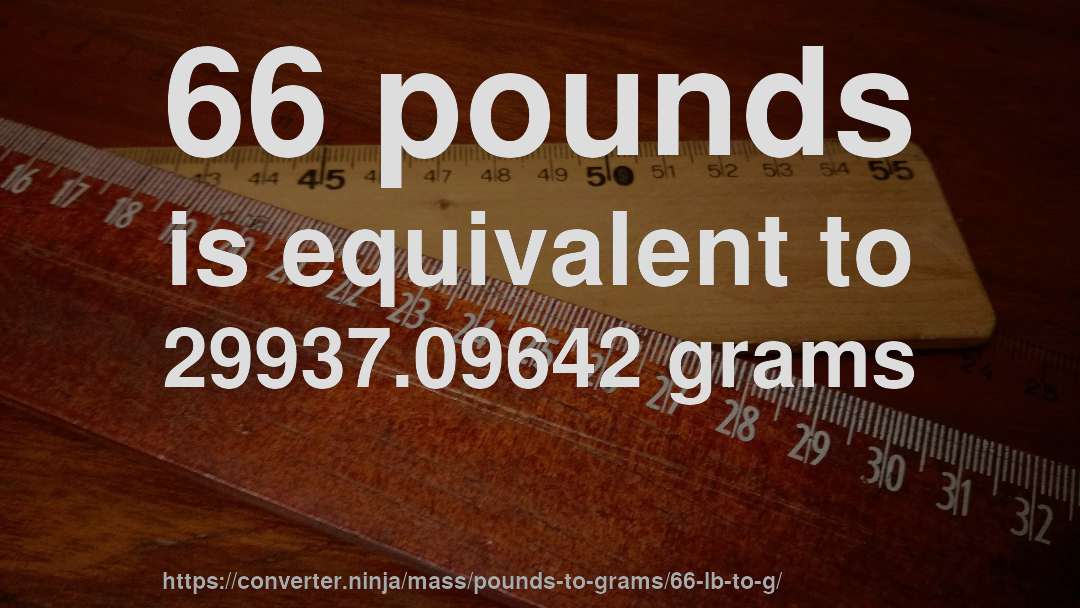
66 pounds is equivalent to 29937.09642 grams.
We know (by definition) that: 1 lb ≈ 453.59237 g
We can set up a proportion to solve for the number of grams.
1 lb 66 lb ≈ 453.59237 g x gNow, we cross multiply to solve for our unknown x:
x g ≈ 66 lb 1 lb * 453.59237 g → x g ≈ 29937.09642 gConclusion: 66 lb ≈ 29937.09642 g
The inverse of the conversion factor is that 1 gram is equal to 3.34033730583148e-05 times 66 pounds.
It can also be expressed as: 66 pounds is equal to 1 3.34033730583148e-05 grams.
Approximation
An approximate numerical result would be: sixty-six pounds is about twenty-nine thousand, nine hundred and thirty-seven point zero nine grams, or alternatively, a gram is about zero times sixty-six pounds.
Units involved
This is how the units in this conversion are defined:
Pounds
The pound or pound-mass (abbreviations: lb, lbm for most pounds) is a unit of mass used in the imperial units, United States customary and other systems of measurement. A number of different definitions have been used, the most common today being the international avoirdupois pound which is legally defined as exactly 0.45359237 kilograms, and which is divided into 16 avoirdupois ounces.[3] The international standard symbol for the avoirdupois pound is lb.The unit is descended from the Roman libra (hence the abbreviation lb). The English word pound is cognate with, among others, German Pfund, Dutch pond, and Swedish pund. All ultimately derive from a borrowing into Proto-Germanic of the Latin expression lībra pondō a pound by weight, in which the word pondō is the ablative case of the Latin noun pondus.
Grams
The gram is a metric system unit of mass. Originally defined as the absolute weight of a volume of pure water equal to the cube of the hundredth part of a metre, and at the temperature of melting ice. However, a gram is now defined as one one-thousandth of the SI base unit, the kilogram, or 1×10−3 kg, which itself is now defined, not in terms of grams, but as being equal to the mass of a physical prototype of a specific alloy kept locked up and preserved by the International Bureau of Weights and Measures. This is in the tradition by which many customary local reference standard stones, lengths (objects) and weights were required to periodically undergo comparison with the official nations standard referents, usually with a particular periodicity defined by the countries statuate laws.
[1] The precision is 15 significant digits (fourteen digits to the right of the decimal point).
Results may contain small errors due to the use of floating point arithmetic.ncG1vNJzZmibn6PDpr7Tnqlnppmjt6J7zJqqrGegpMKvsNJmq6hll6eurr%2BOb21mpJJiwbB5xmg%3D